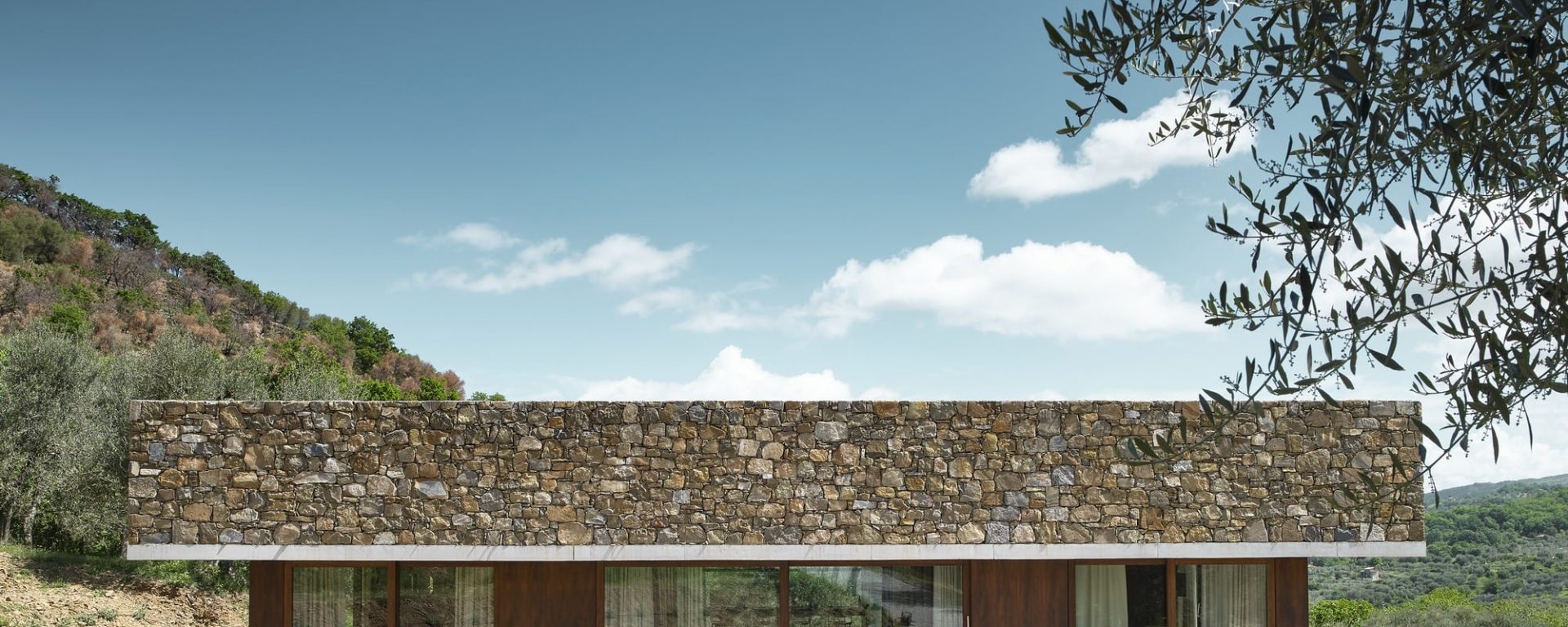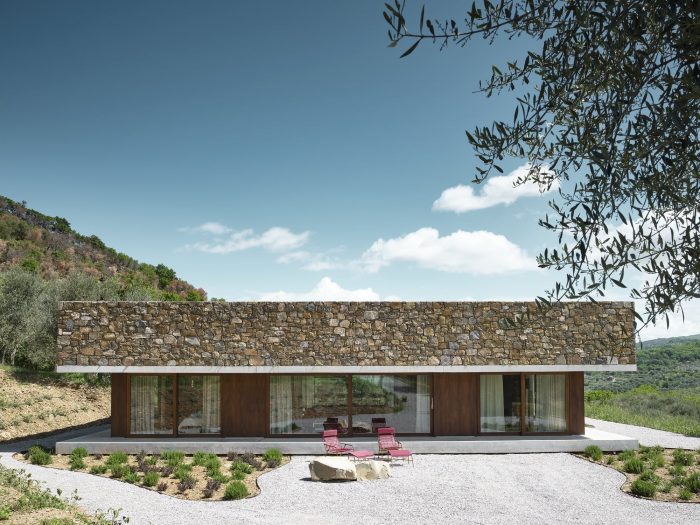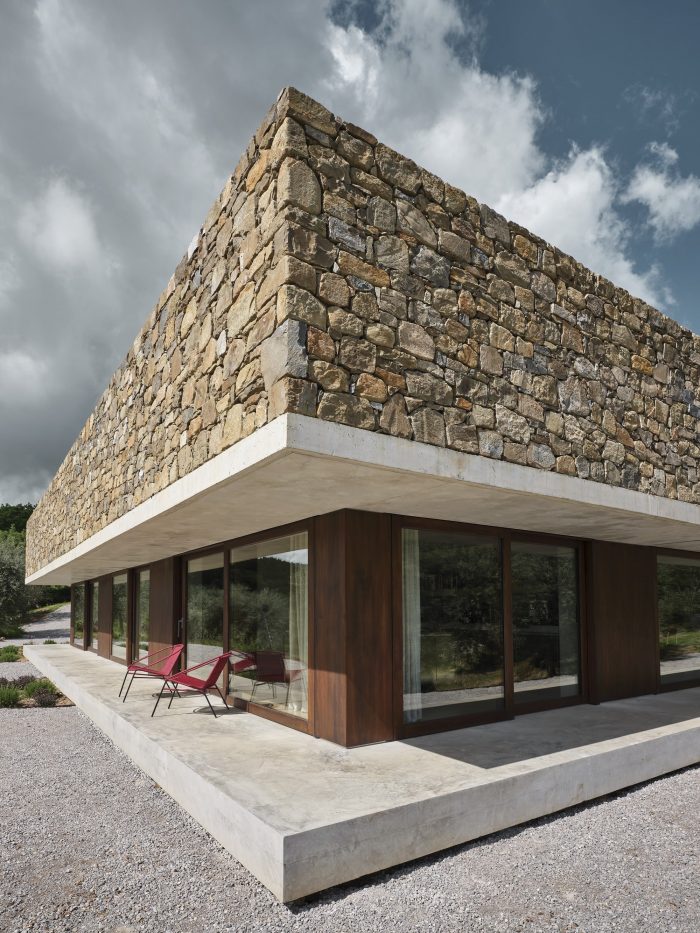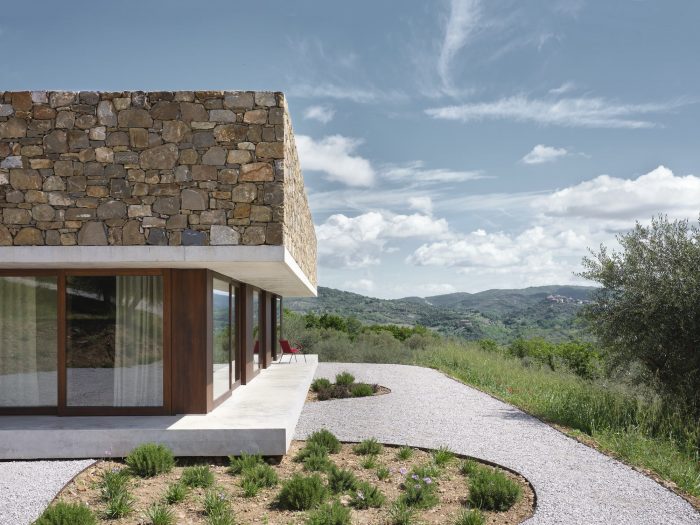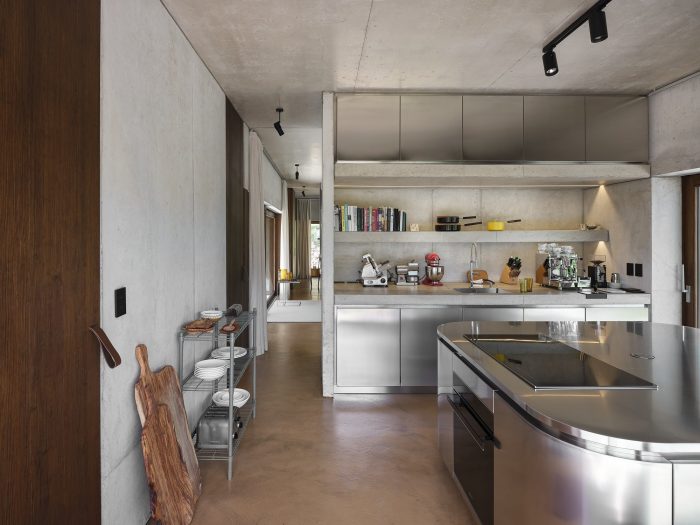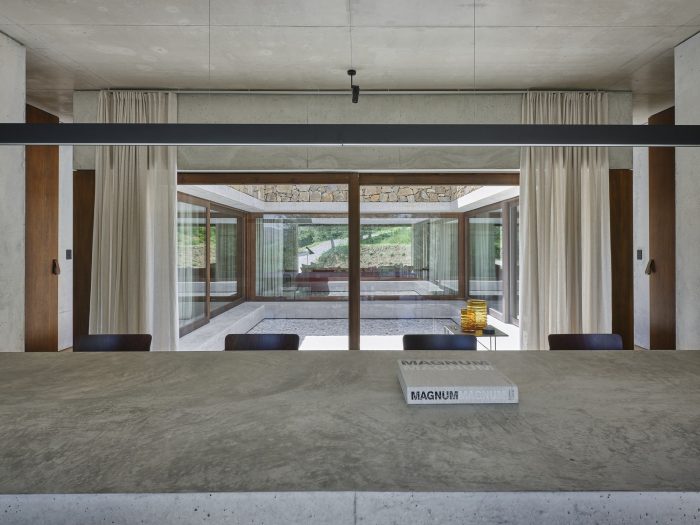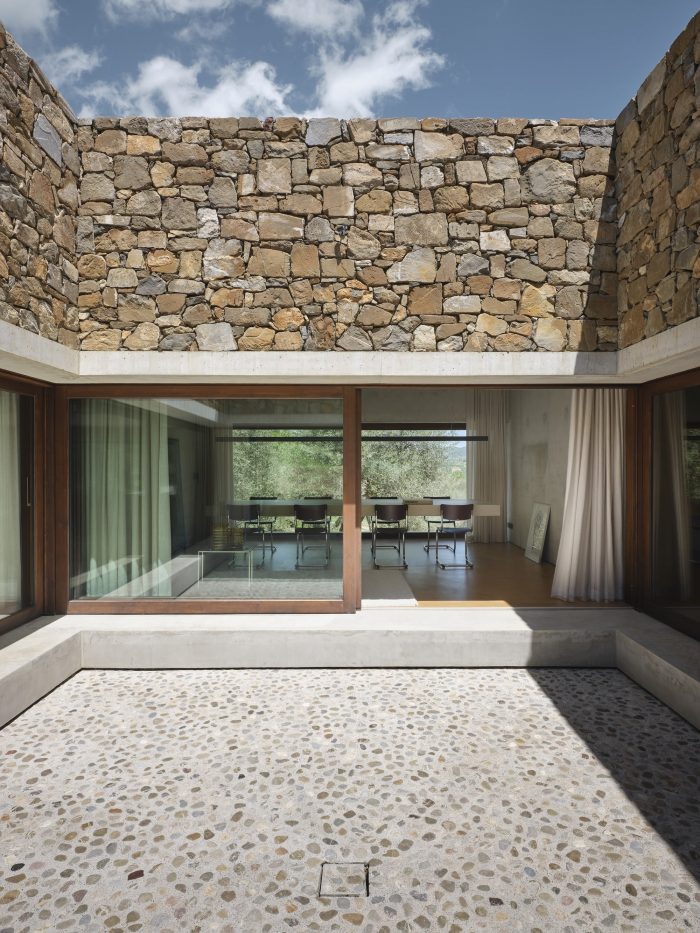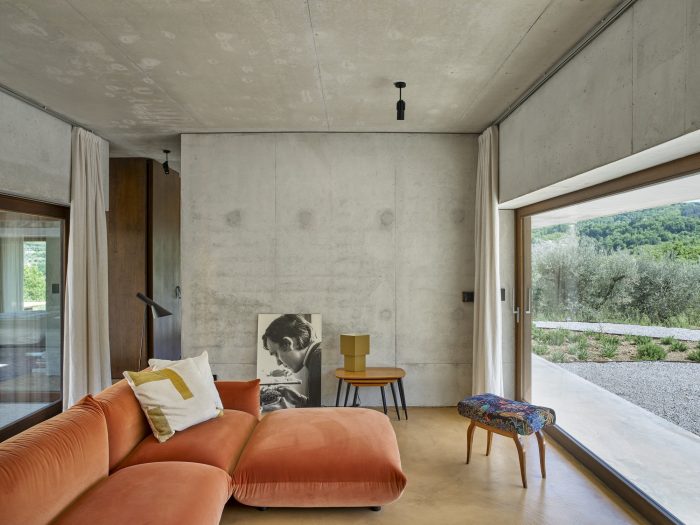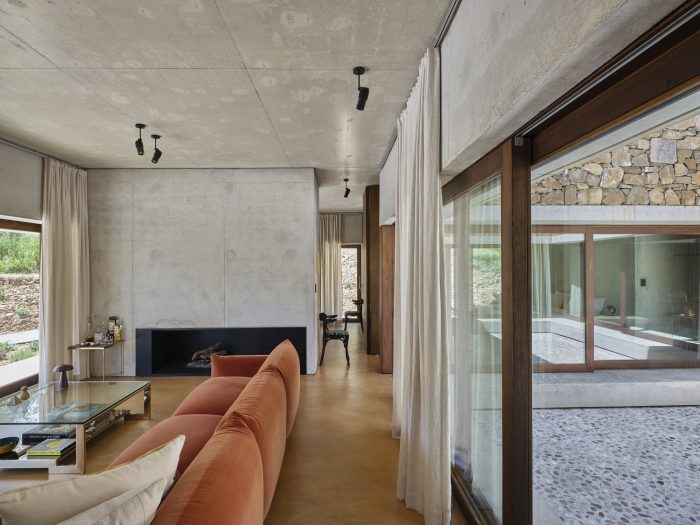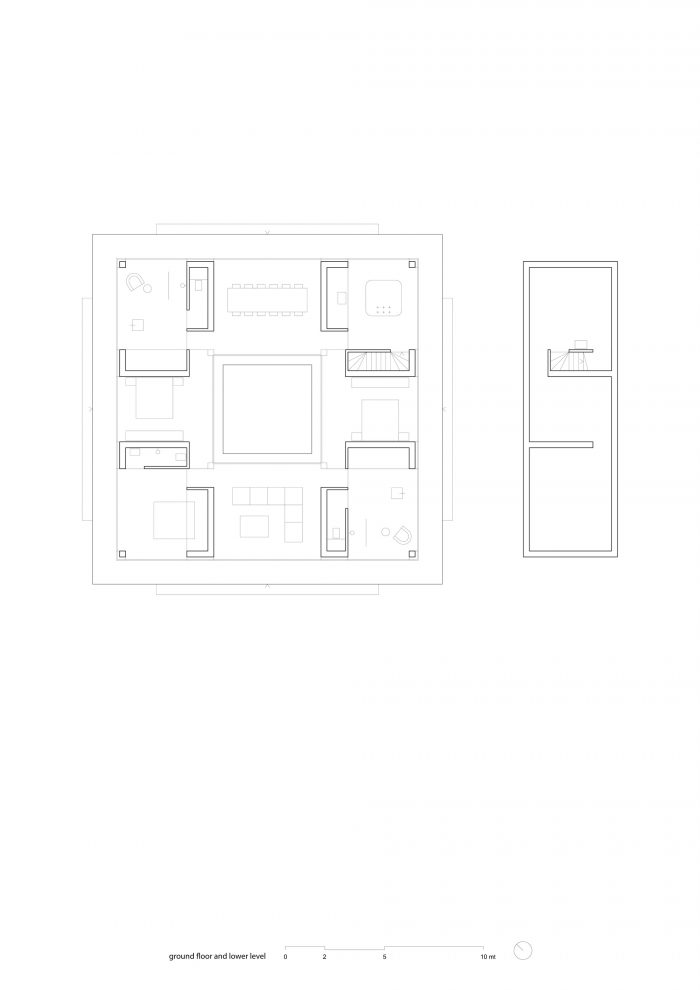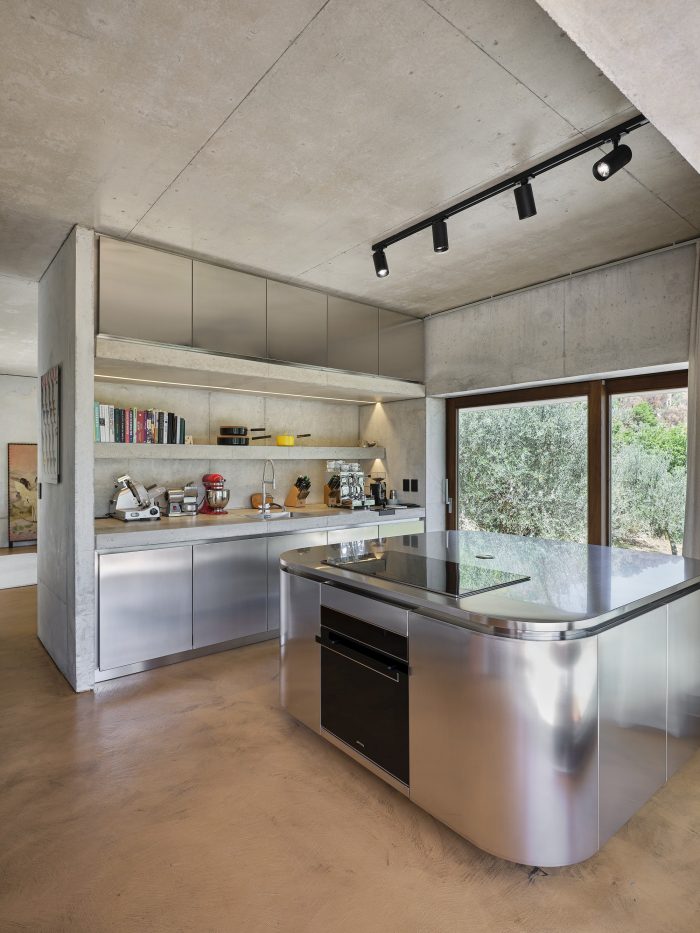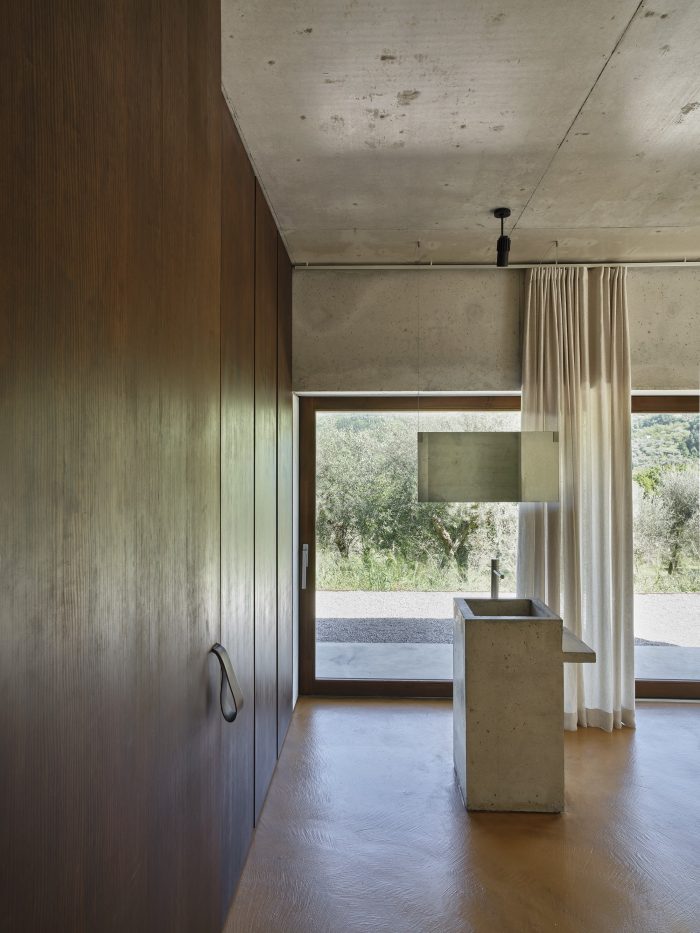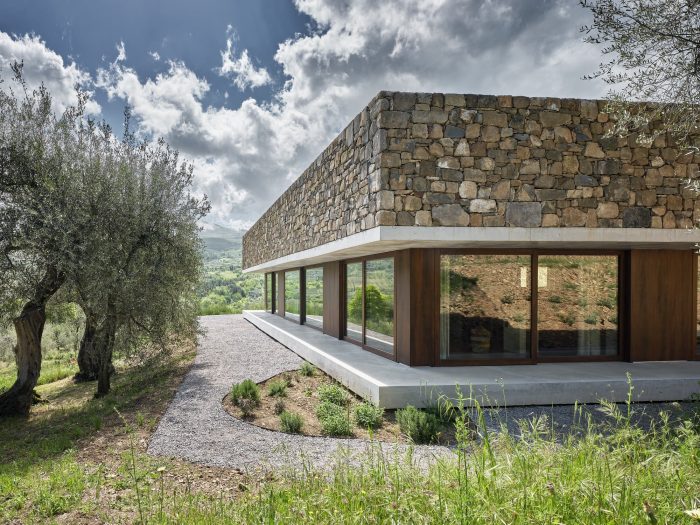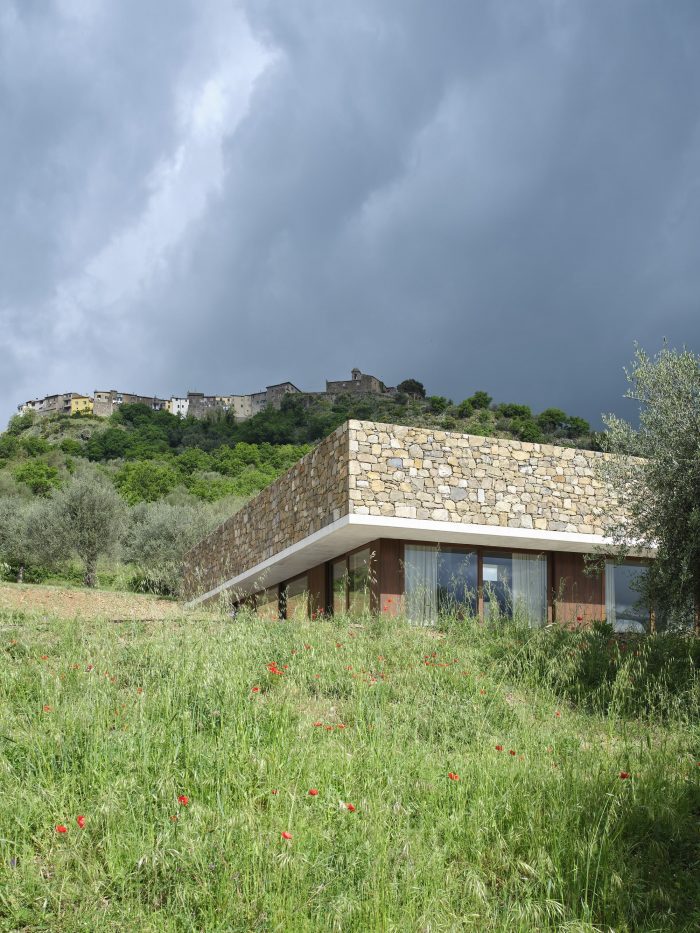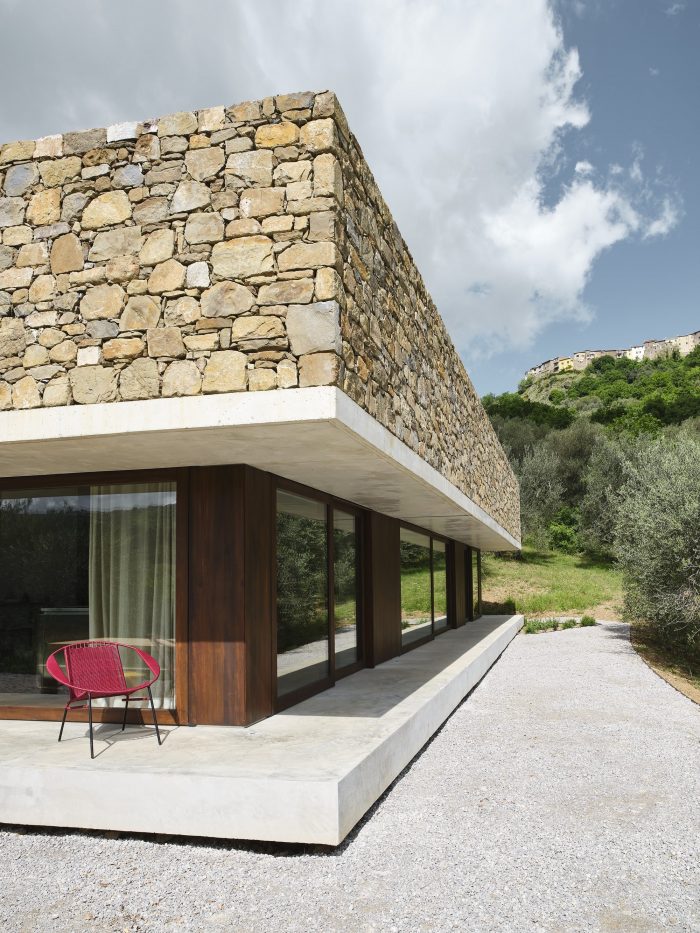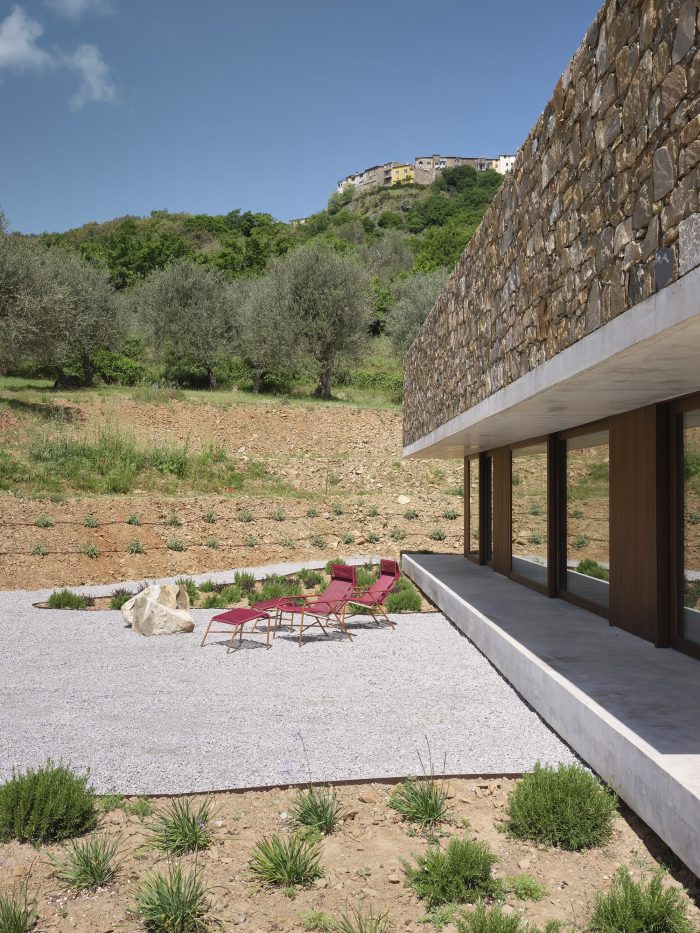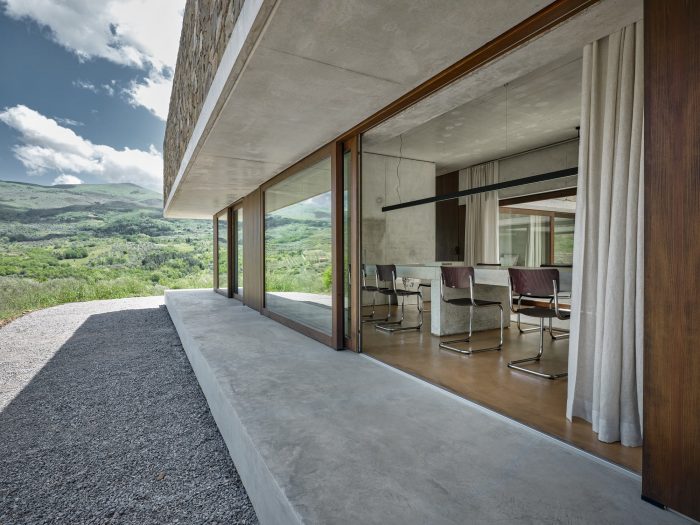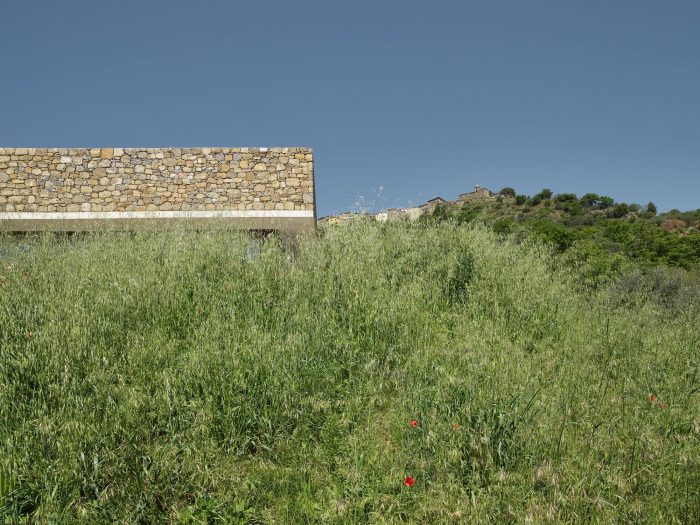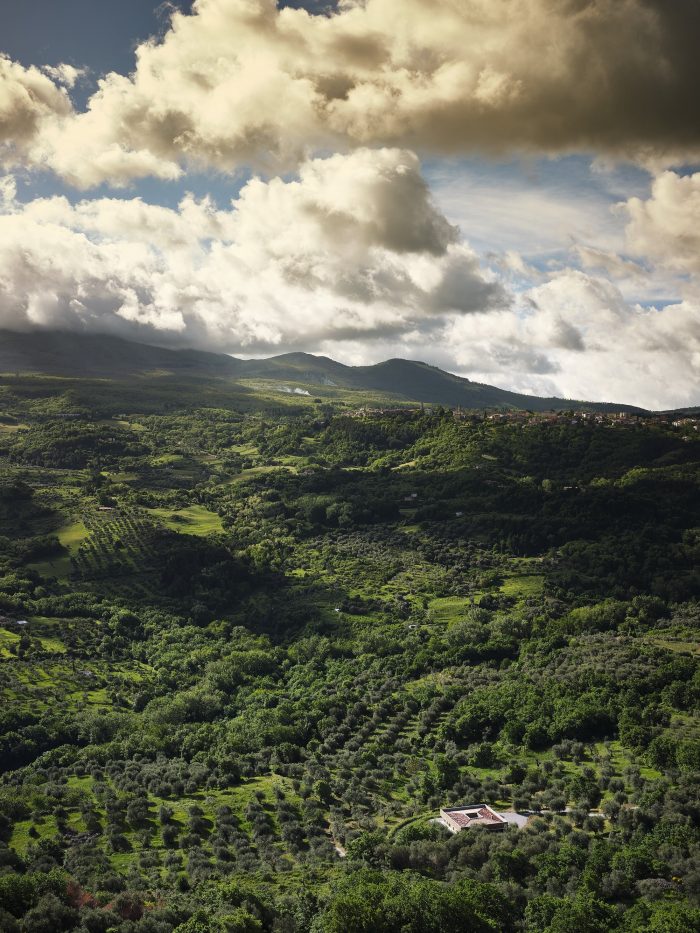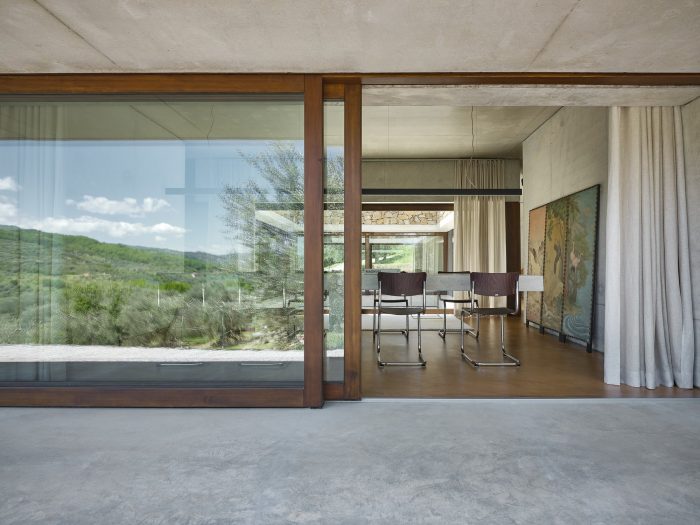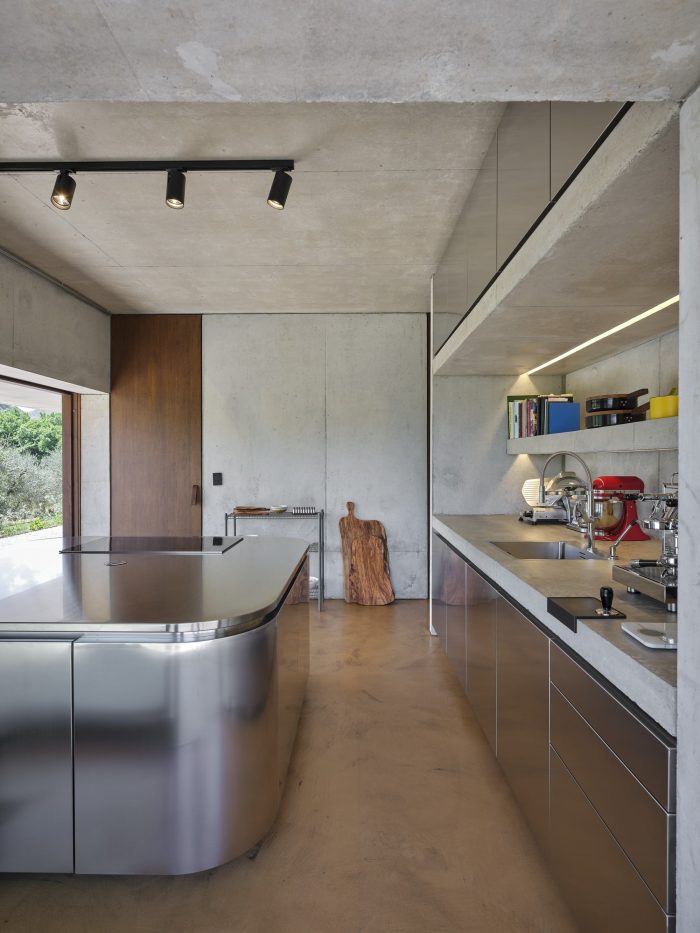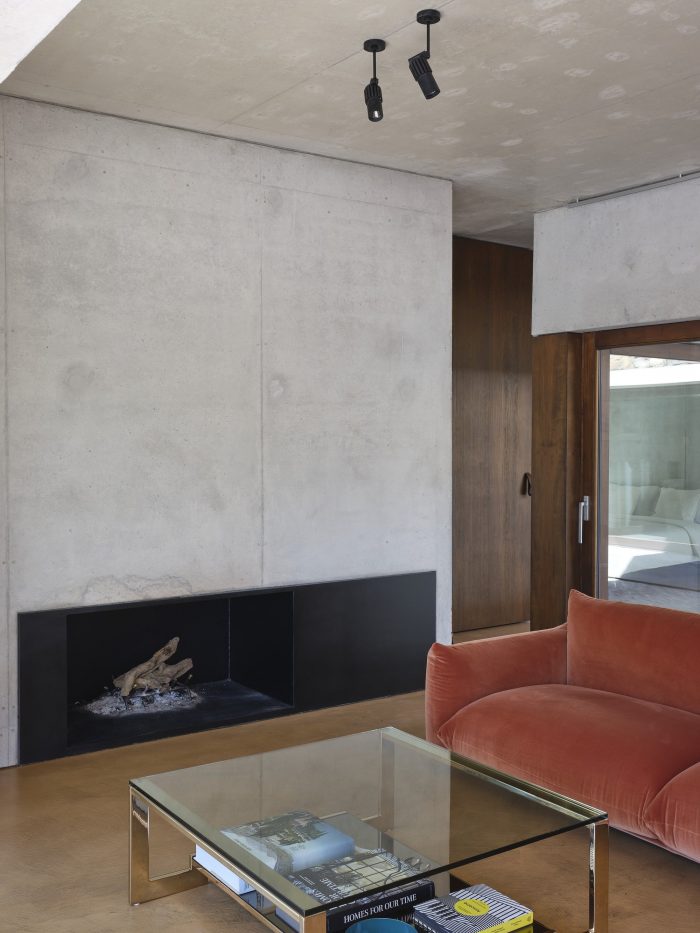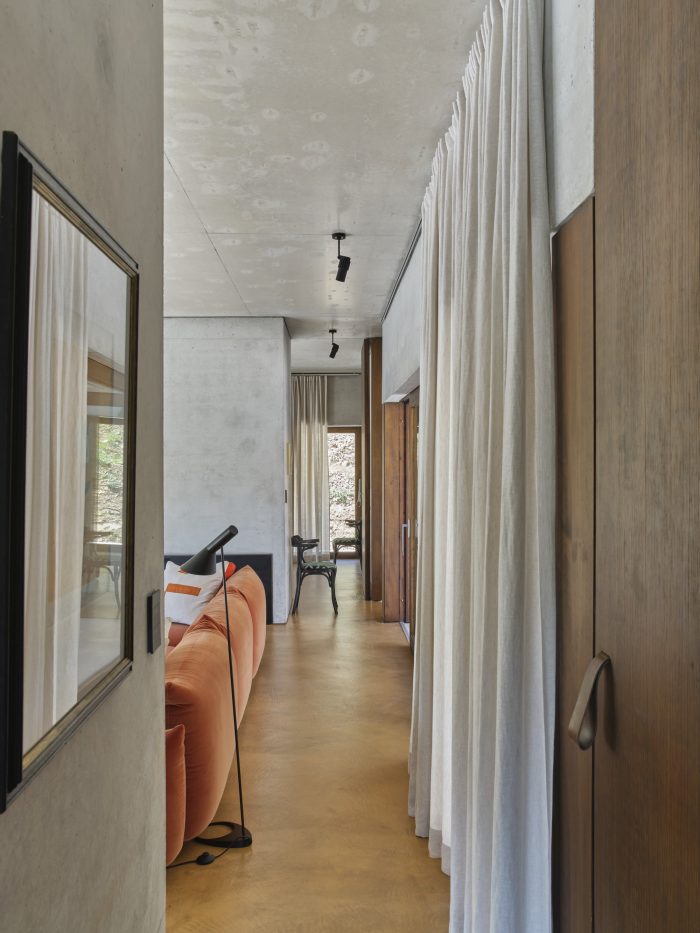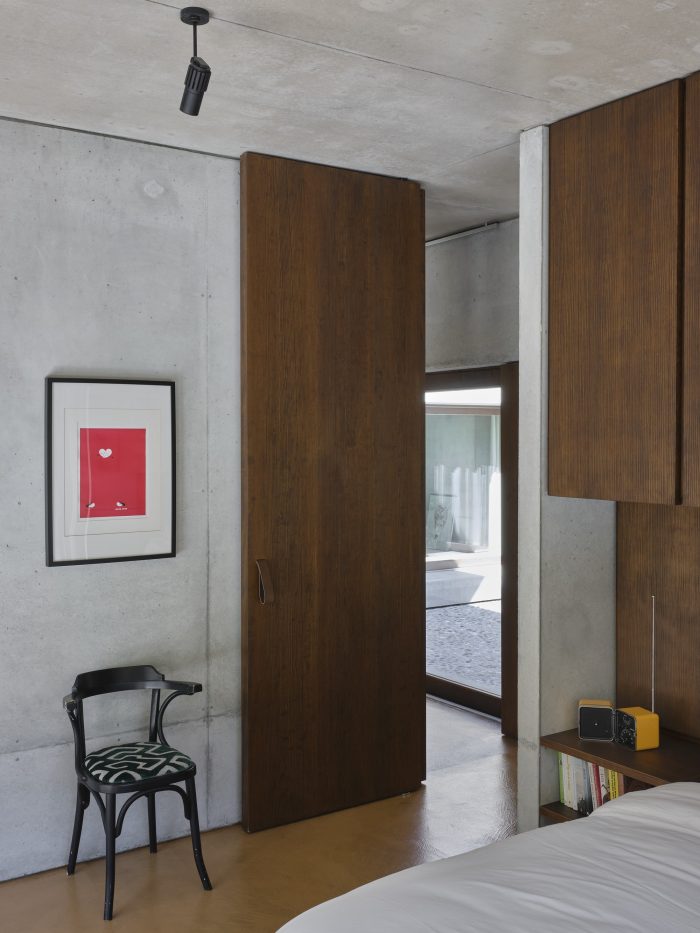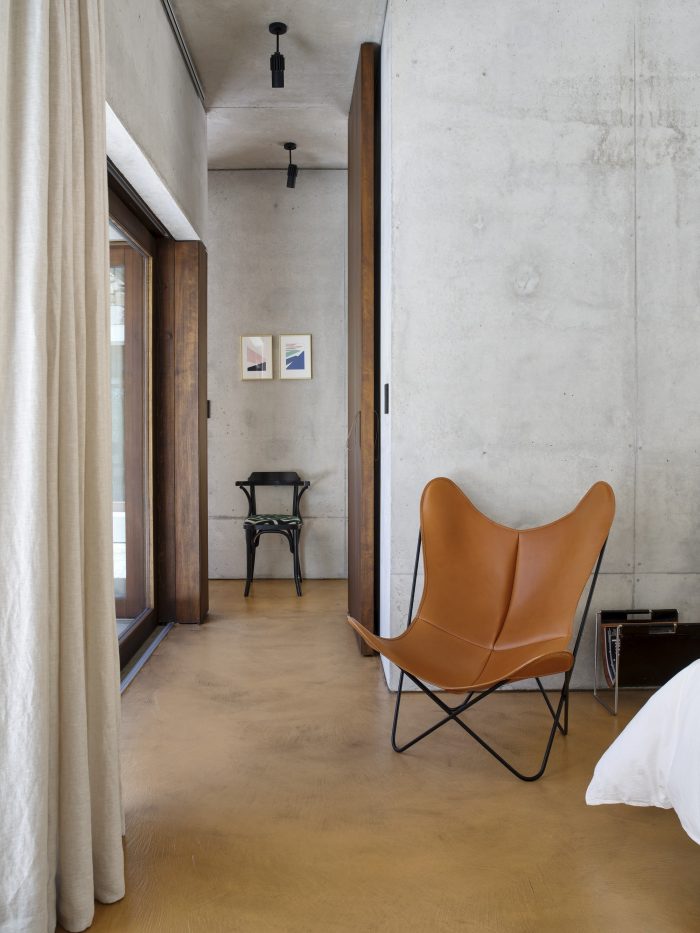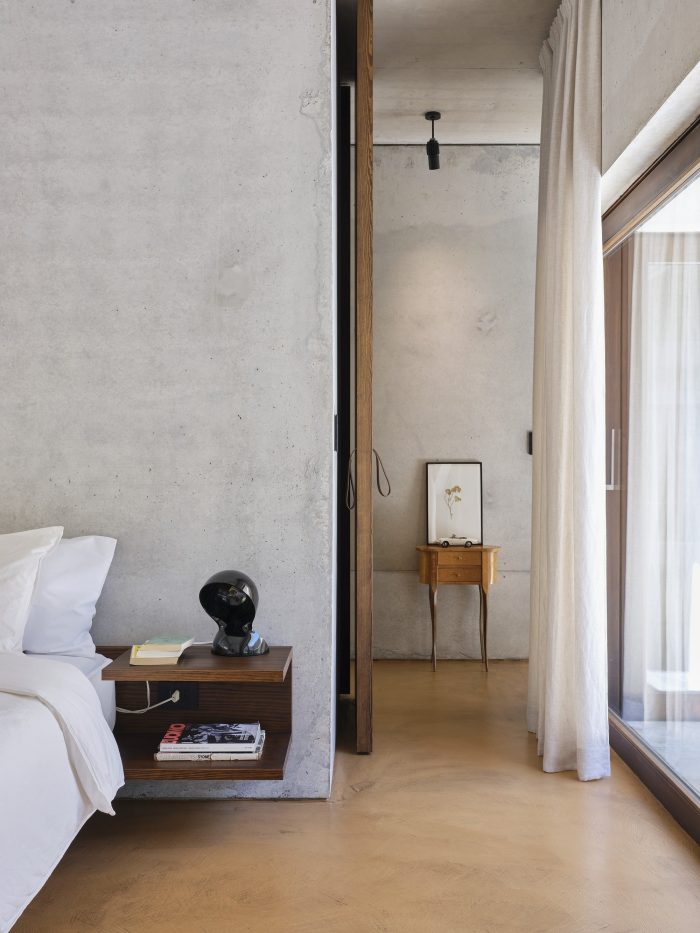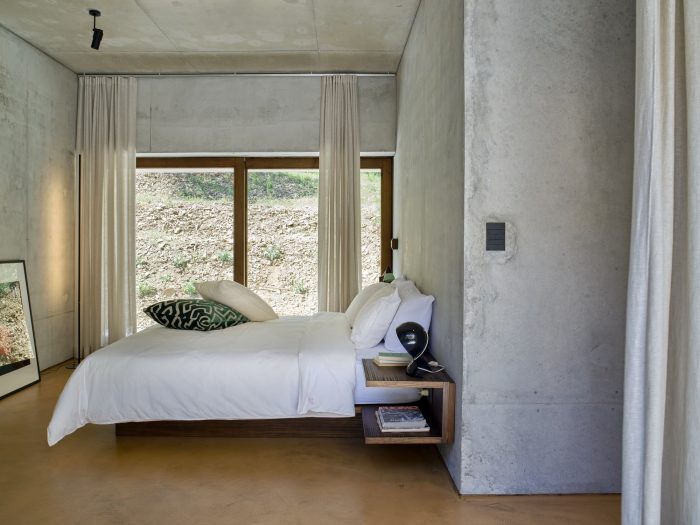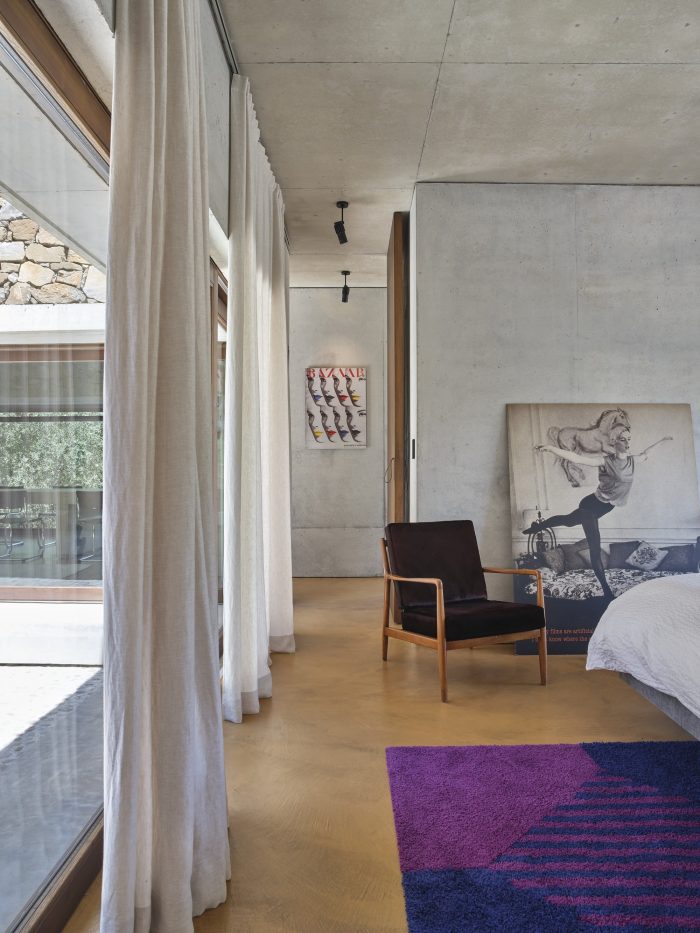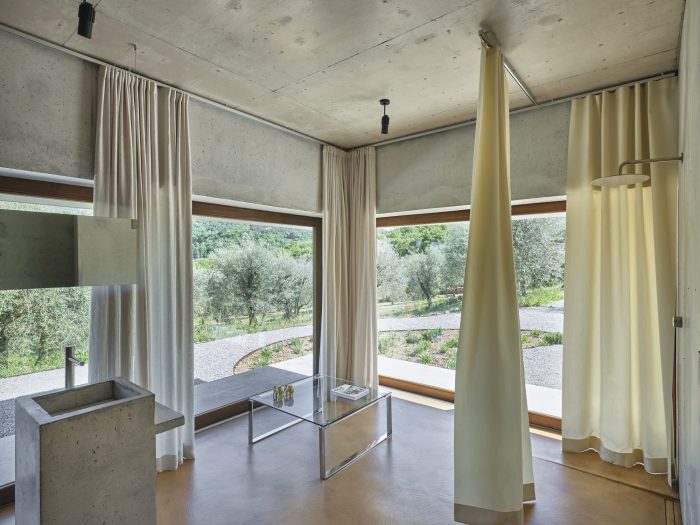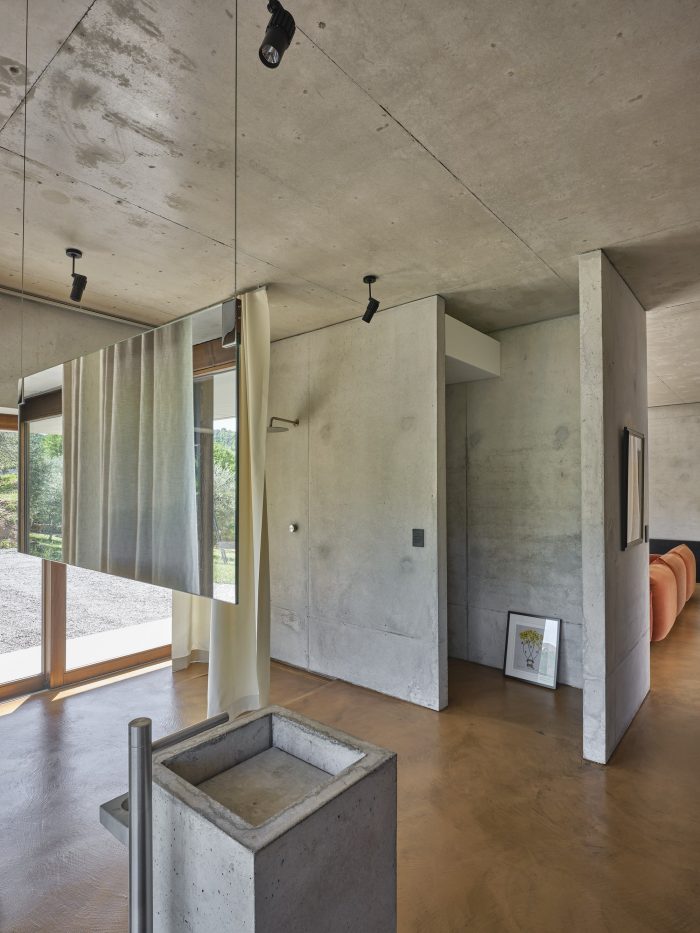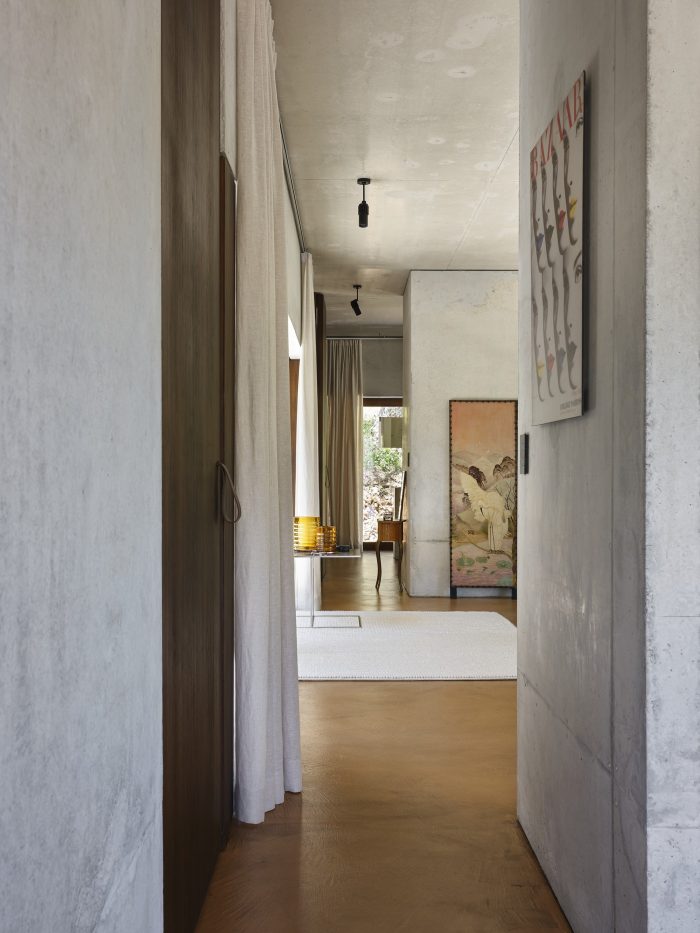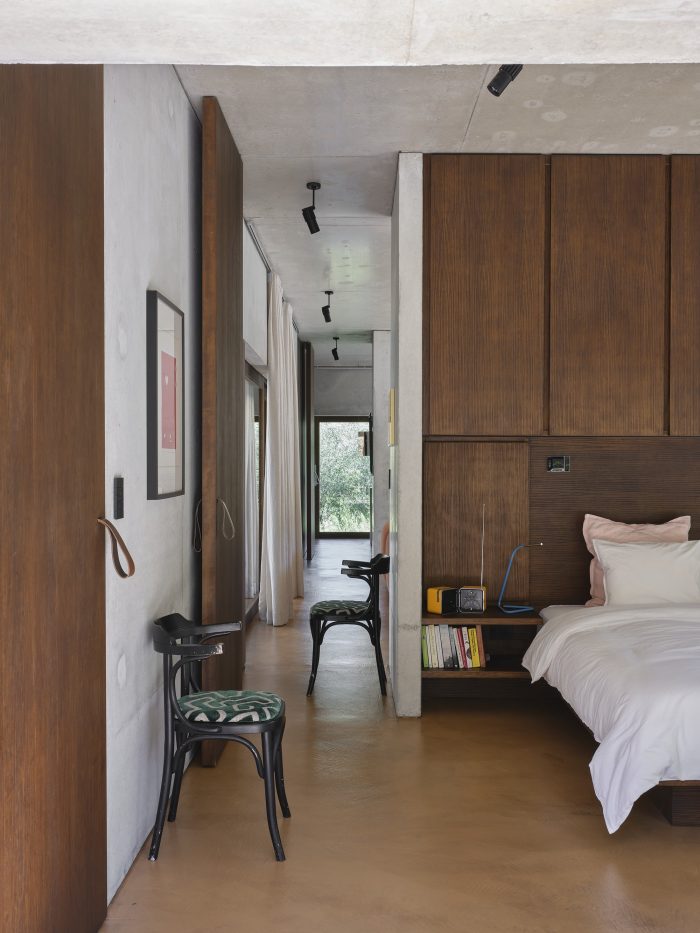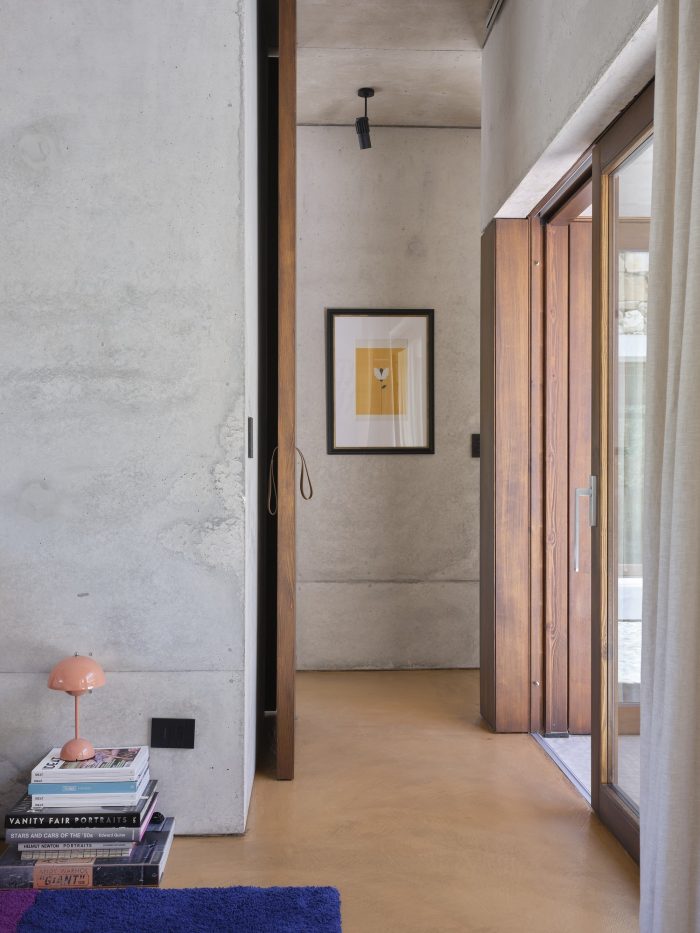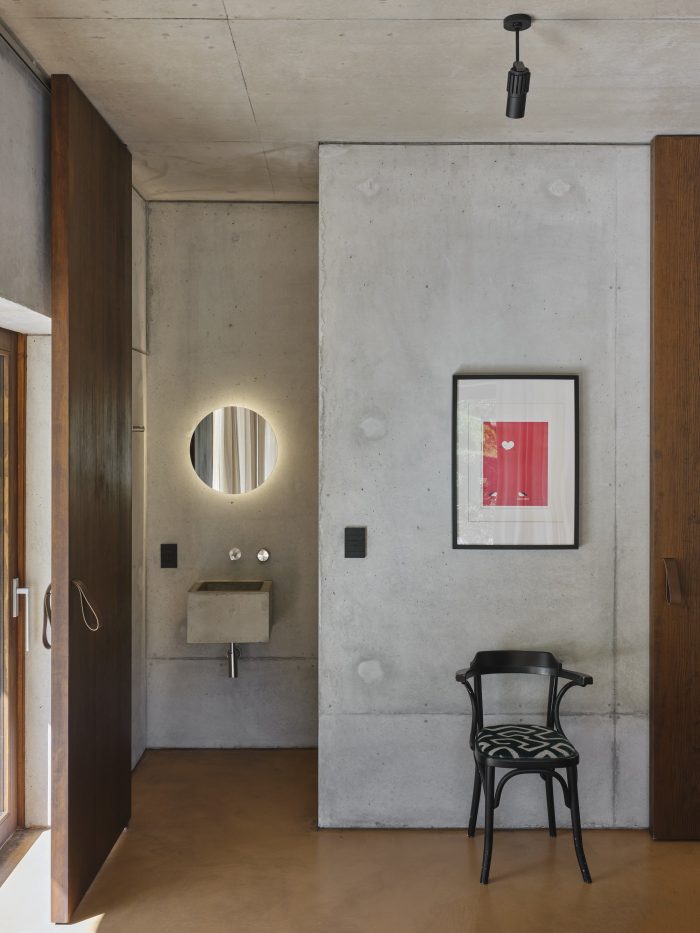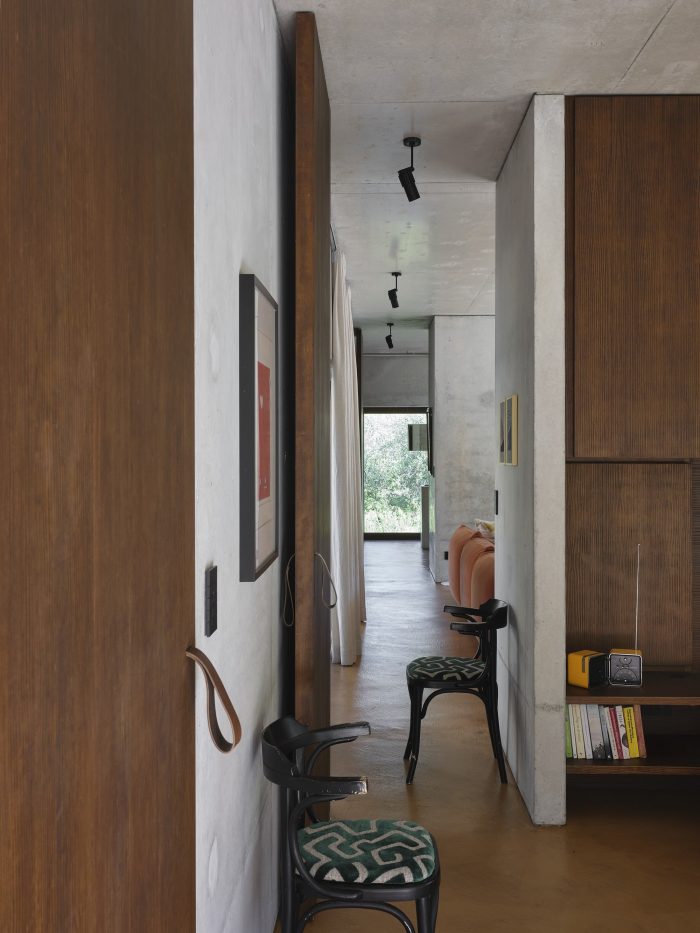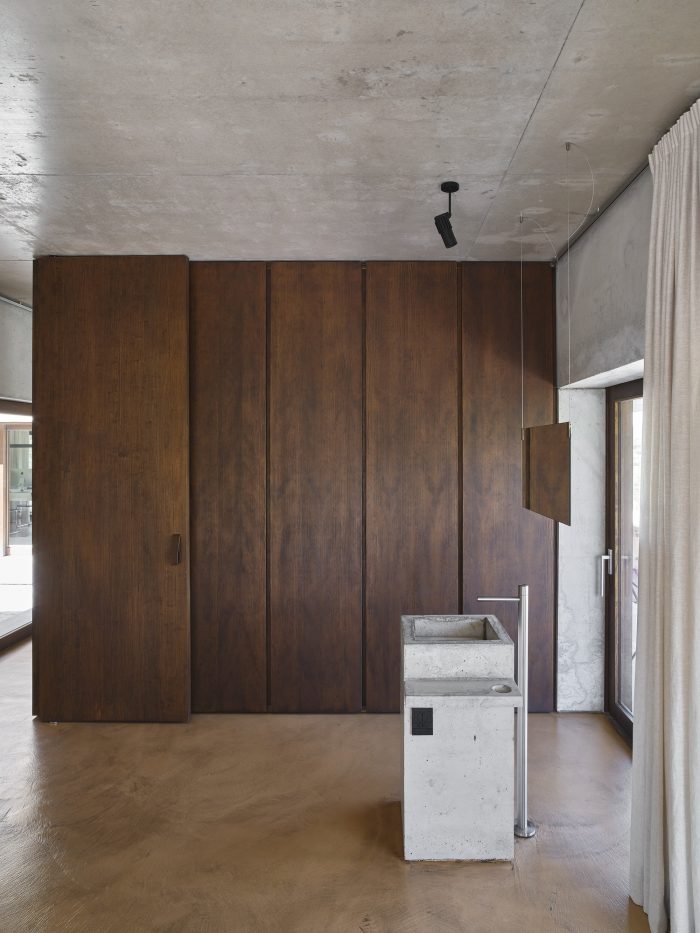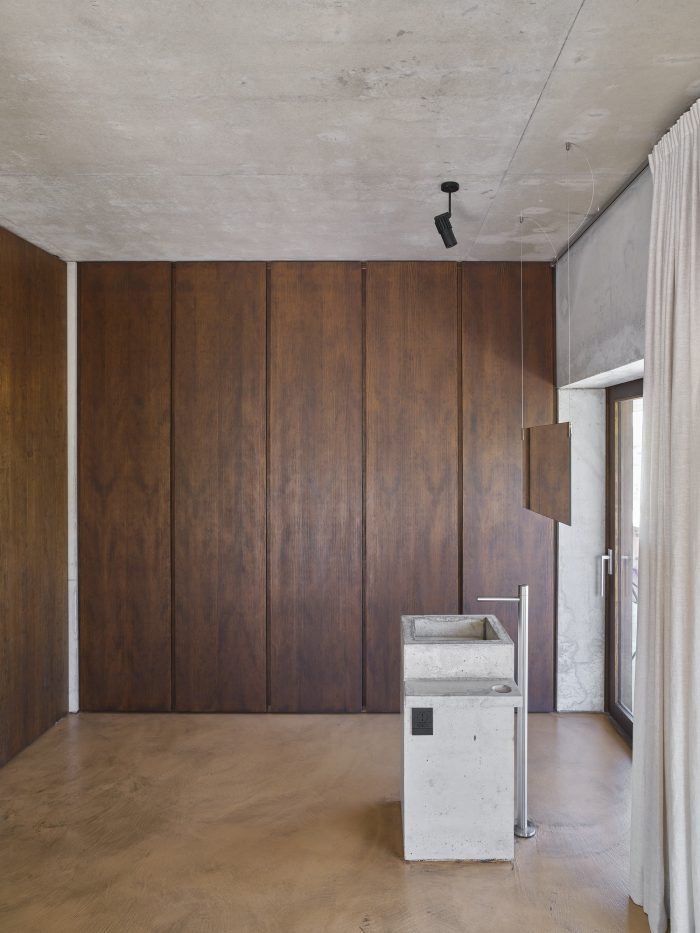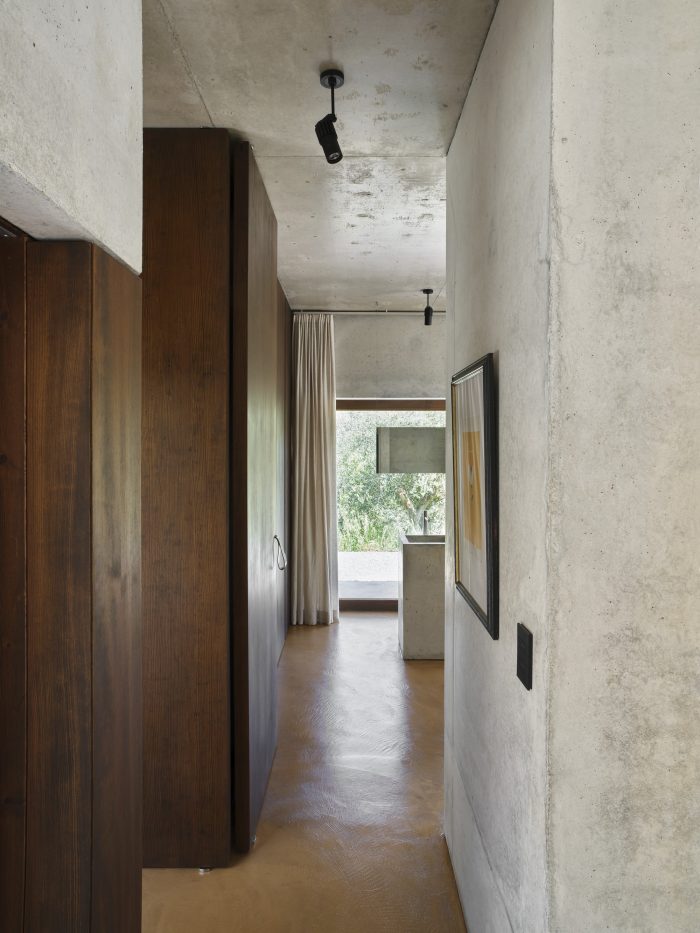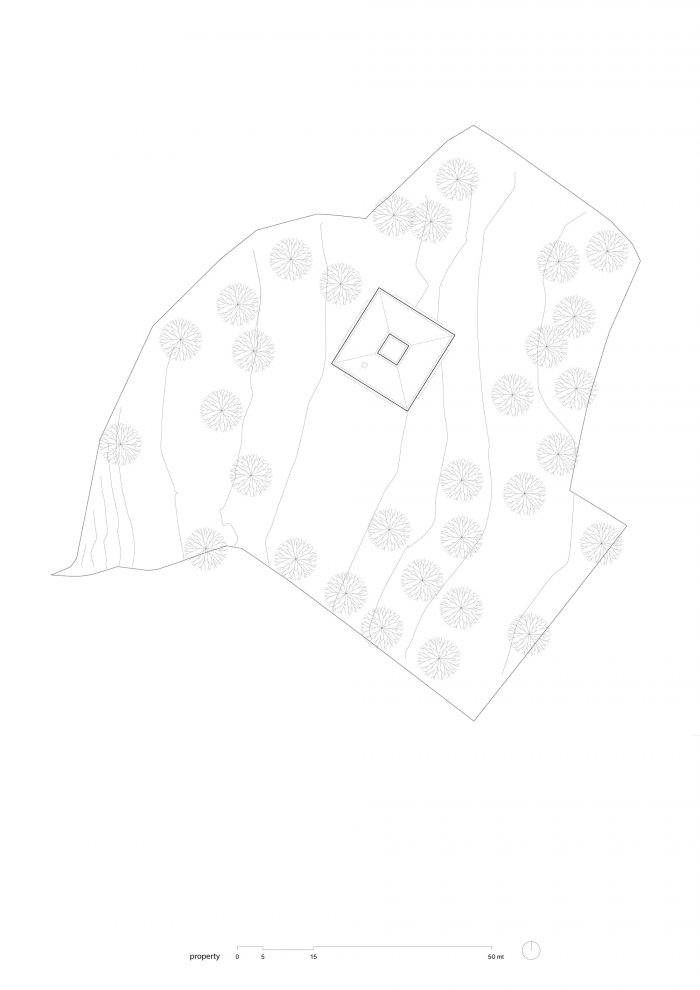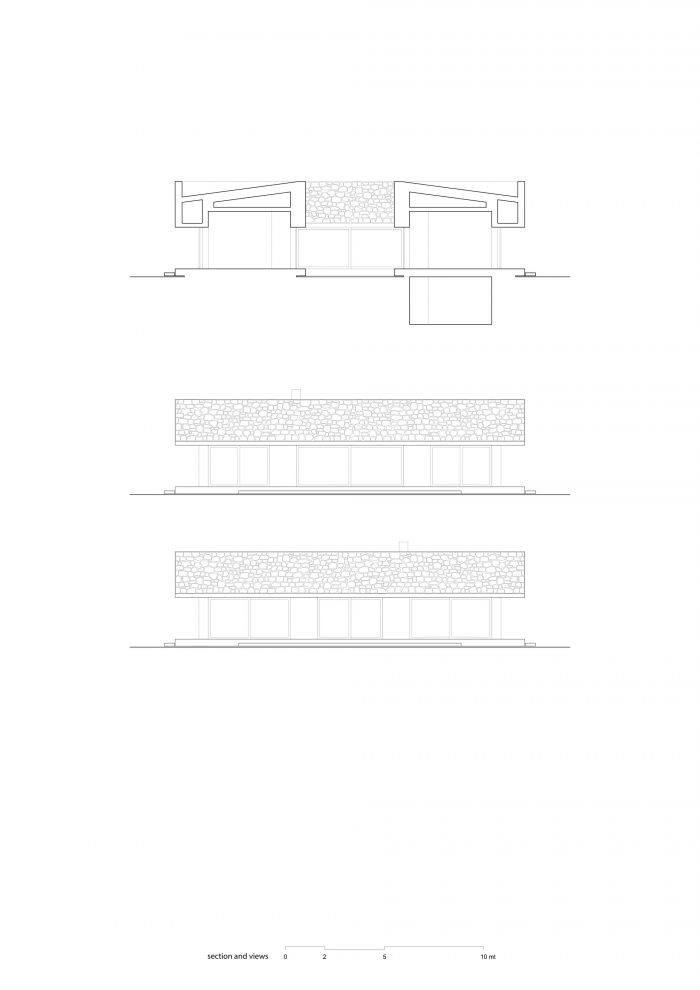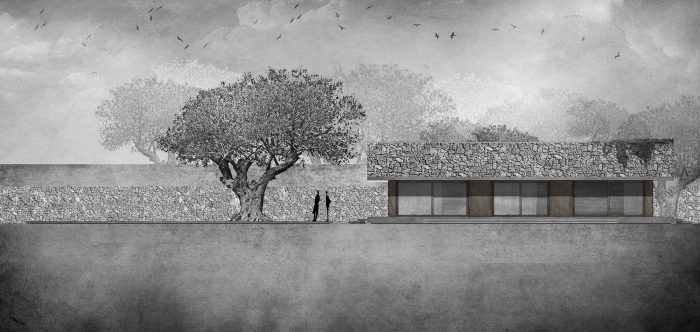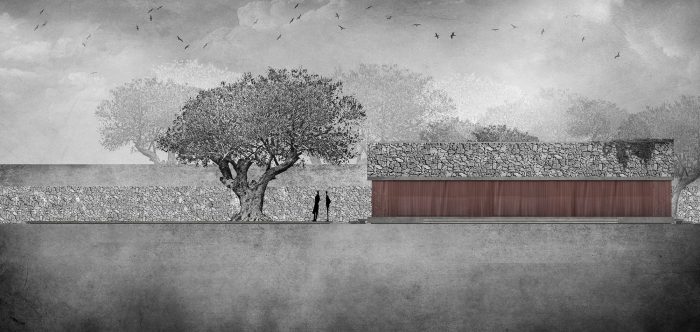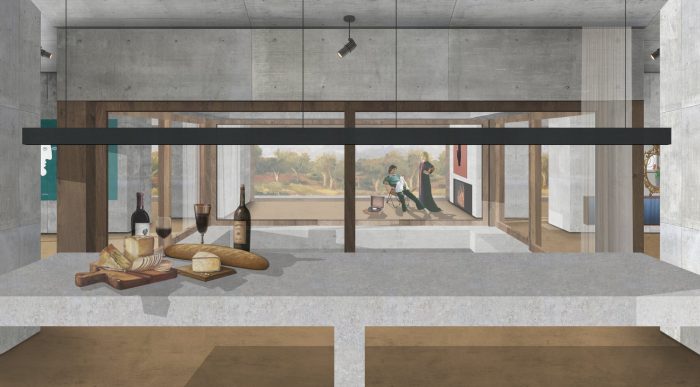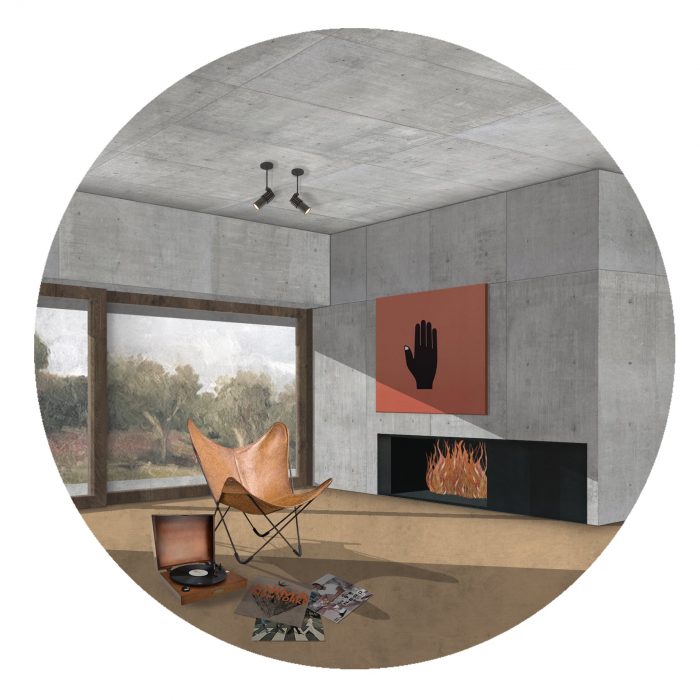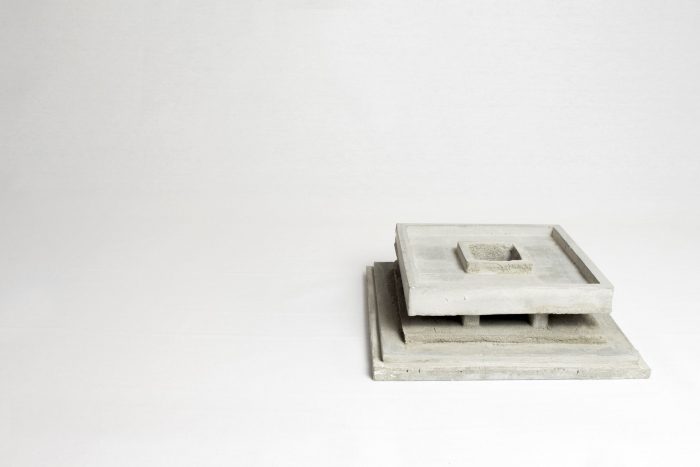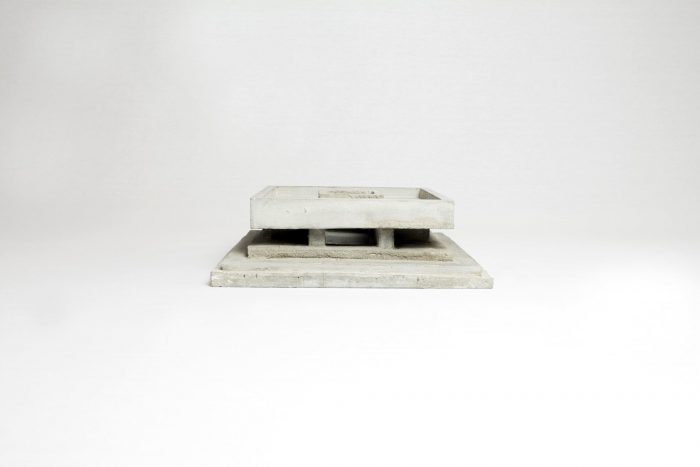在一片橄榄树林的环绕下,HV Pavillon是位于托斯卡纳马雷玛(意大利)阿米亚塔山麓的一个住宅项目。建筑离地而起,作为一个亭子,以一种戏剧性的方式展现在景观面前:一个舞台。
Surrounded by an olive grove, HV Pavillon is the project of a residence in the foothills of Amiata Mount in the Tuscan Maremma (Italy). Raised off the ground, the building is presented as a pavilion released to the landscape in a theatrical way: a proscenium.
这是一个欣赏周围自然的空间机制,声称自己属于这个地方,属于它的世俗历史。HVP是一个典型的地中海建筑,在其更古老的类型学和建筑原则中面临着一个住宅的问题。
It’s a spatial mechanism for admiring the surrounding nature claiming its belonging to the place and to its secular history. HVP is a typical Mediterranean architecture facing the issue of a residence in its more archaic typological and construction principles.
八个结构箱安置在一个钢筋混凝土平台上,支撑着坚实的石头地板覆盖。房子里的空间是围绕着一个罗马-意大利回忆的中央天井而几何化配置的。”Tusculanum中庭”。
Eight structural boxes settled on a reinforced concrete platform support the solid stone floor covering. The spaces in the house are geometrically configured around a central patio of Roman-Italic reminiscence: “Atrium Tusculanum.”
室内只是结构和原材料,旨在庆祝当代的细节解决方案的方法。 地板是由水泥基树脂制成的,在温暖的季节里,它具有太阳炙烤过的草的颜色,在秋天则是栗子叶的颜色。天然木材完善了体积,所有的家具都是定制的。
The interior is just structure and raw materials aimed at celebrating the contemporary approach to detail solutions. The floor is made of cementitious resin and it has the colour of sun-scorched grass in the warmer months and chestnut leaves in autumn. Natural wood completes the volumes and all the furnishings are customised.
一个钢制的厨房岛和一个不朽的现浇水泥桌庆祝了良好的意大利美食的仪式,强调了房子的欢快特性。 桌子是世俗的祭坛,位于房子里每个房间可见场景的中心。
A steel kitchen island and a monumental cast-in-place cement table celebrate the rite of good Italian cuisine emphasising the convivial character of the house. The table is the secular altar in the centre of the visible scene from every room in the house.
该设施是亲密的炉灶和橄榄园之间的空间连续体,除了浅色的亚麻窗帘外,没有遮光的过滤元素。在外面,严格的几何形状比例紧凑而有凝聚力,它尊重当地的乡村建筑传统,在人类化的土壤上建造 “干石 “墙,而木头填充物让人想起阿米亚蒂尼传统乡村建筑的锁定元素,称为 “seccatoi” – 栗子的干燥器 -。 通过这种方式,该建筑与景观融为一体,并将其深深地与自身的历史联系在一起。
The facility is a spatial continuum between the intimate hearth and the olive grove without blackout filtering elements except for the light linen curtains. Outside the rigor of geometry is compact and cohesive in proportions and it honours the local country building tradition of “dry stone” walls on anthropized soil, whereas the wood infills recall the locking elements of the amiatini traditional rural buildings called “seccatoi” – dryers for chestnuts -. In this way, the building merges with the landscape and ties it profoundly into its own history.
Architects: GGA gardini gibertini architects
Area : 230 m²
Year : 2021
Photographs :Ezio Manciucca
Manufacturers : FritsJurgens, Louis Poulsen, Agape, FORTI TONINO srl, MANOLOBAGNI ONE, Quadro Design, SALAROLI HOME RIMINI, VBORICCIONE
THERMOTECHNICAL PLANS : ABITARE 2000. Castel del Piano (GR). Italy.
COLLABORATORS : Luigi lupini, Giada Spano
Structures : Lorenzo Silvagni. Savignano sul Rubicone (FC).Italy.
Landscape Design : Kristof Huysecom. Castel del Piano (GR). Italy
General Contractor : AC Costruzuini.Castel del Piano (GR). Italy.
City : Castel del Piano
Country : Italy

